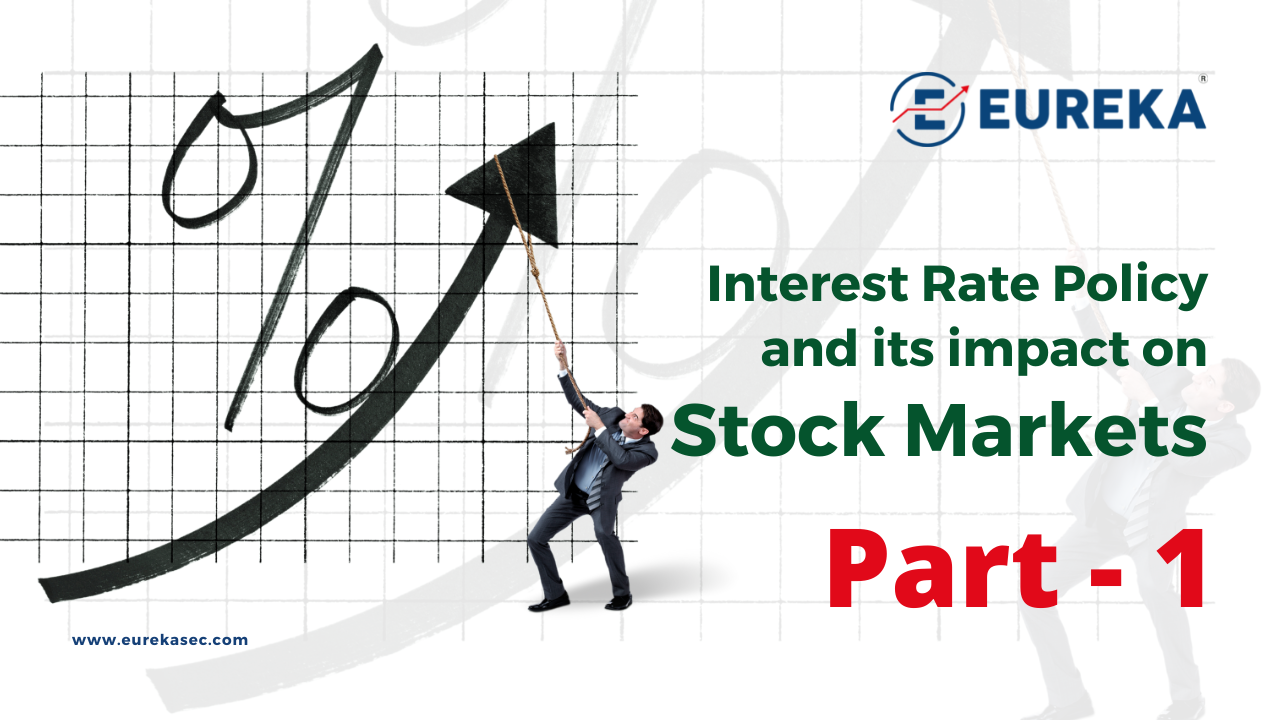
Stock markets worldwide are heavily impacted by Credit Policy or Interest Rate Policy of major Central banks from time to time. In our case, the market participants closely monitor the interest rate policy laid down by US Federal Reserve and also Reserve Bank of India from time to time. Let us understand what interest rate policy is and how it affects stock markets in this discussion series of three parts.
Fiscal Policy and Credit Policy
Economy of any country, developed or developing, largely depends on two types of policies of Central Government – one is Fiscal Policy and another one is Monetary Policy. Fiscal policy is basically the roadmap of Government’s spending and Borrowing activities and Government is responsible to promulgate the Fiscal Policy, Union budget is one of the most important documents in this regard. Monetary policy refers to Central Bank activities (in our case Reserve bank of India, in the case of US it is Federal Reserve) that are directed toward influencing the supply of money and credit in the system. Both the policies are utilized to regulate the economy, to drive the stable and sustainable growth and also to maintain the balance between demand and supply thereby controlling inflation.
Although the authority of these two policies are different, i.e., Central Government for the Fiscal Policy and Reserve Bank of India (RBI) is for Monetary Policy and also the RBI is an autonomous organization, but both the authorities generally
What is Inflation?
Interest Rate Policy or Credit Policy is the major part of the Monetary Policy, laid down by Reserve Bank of India. This policy is the most important tool to control inflation. To understand what the Credit policy is, first we need to understand the inflation.
Inflation is simply the rise in prices. We need a big and diversified set of products as well as a host of services for living a comfortable life. They include commodities like food grains, metal, fuel, utilities like electricity and transportation, and services like health care, entertainment, and labor and lot more. Inflation is measured as average price increase of a basket of selected goods and services over some period of time.
For example, price of 1 kilogram of rice was Rs. 100 in the month of December 2021 and it has increased to Rs. 110 in the month of December 2022. This means the inflation of rice is 10% for the month of December 2022. Since it is impossible to measure price rise of every single good and service, it allows for a single value representation of the increase in the price level of various goods and services in an economy over a period of time.
Type of Price Index
There are two types of Price Index with two baskets of goods and services – one is Consumer Price Index (CPI) and another is Wholesale Price Index (WPI). CPI is the price what is generally paid by the end consumers and WPI is the price what is paid by the wholesalers. The composition of these two baskets is almost same but having different weightage of individual goods and services. Inflation is measured with the change of these indices over a period of time.
Purchasing power of currency
The inflation beyond a certain level is actually translates into decrease in purchasing power of the currency. For example, price of 1 kilogram of rice was Rs. 100 in the month of December 2021 and it has increased to Rs. 110 in the month of December 2022 – this essentially means 100 rupees was able to buy 1 kilogram of rice one year ago and the same 100 rupees is not being able to buy same 1 kilogram of rice, it’s now able to buy lesser quantity of rice. Such decline in purchasing power of currency generally leads to lesser savings, lesser investments and lesser spending which ultimately weaken the growth. When this inflation moves beyond a comfortable range, the central bank steps in and revise the interest rate.
Comfort range of inflation
Such comfort range of inflation is not universal and varies from country to country. In case of growing economy or developing countries, inflation is generally slight higher than that in developed countries. A certain level of inflation is essential for growth of a growing economy and in our case the comfort range of inflation which has been set by RBI is 4-6%. At present, both CPI and WPI are higher than RBI’s comfort range.
Types of Inflation
The inflation is basically of two types, depending upon the reason, one is due to higher demand and another one is due to lower supply. If the inflation is principally due to lower supply, the interest action alone could not fight this, the role of Government becomes critical in easing the supply side. However, whatever be the reason, to control the inflation it is necessary to suck the liquidity from the system i.e, to reduce the money in the system. Interest Rate policy is laid down towards such direction.







